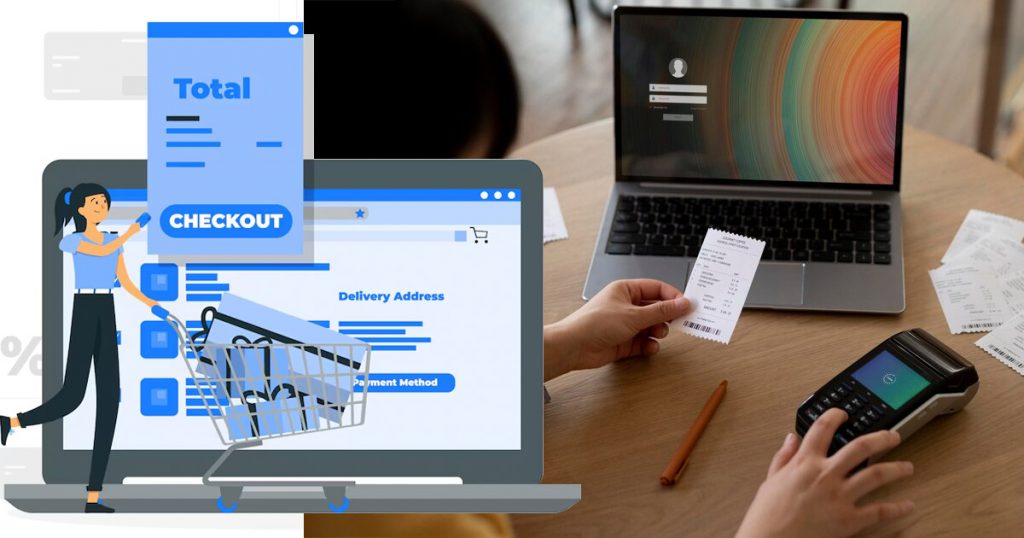Online shopping has quickly become one of the most popular ways to buy and sell products and services. People love the convenience of being able to shop from anywhere, at any time, which is why more consumers are choosing online transactions over going to physical stores. Studies show that eCommerce sales could hit $6.4 trillion by 2024, underscoring the importance of having a strong online presence.
For businesses, just having a physical store isn’t enough anymore. Success now means having a solid online presence that works alongside your traditional store. Businesses can increase their audience, reach more people, and boost sales by utilizing both in-person and online sales channels.
Integrating your Point of Sale (POS) system with your website can make this even better. This integration not only makes managing sales easier but also helps your business meet the expectations of today’s tech-savvy customers.
Understanding a POS System and Its Integration with a Website
A Point of Sale (POS) system is essential for both physical and online stores. It acts as the main hub for handling transactions and managing sales and inventory. Here’s what a typical POS system includes:
Hardware Components
- Barcode scanners
- Cash registers
- Card readers
- Receipt printers
Software Components
- Sales data management
- Inventory tracking
- Customer information management
- Reporting tools
Integrating a POS system with your website means connecting these systems to your eCommerce platform. This allows for smooth management of sales across all channels. The integration keeps sales data and inventory in sync between your physical store and online shop, ensuring stock levels are always accurate. Using APIs or plugins, the POS system and eCommerce platform can communicate effectively, providing real-time updates on transactions, inventory, and customer data.
How to Link Your Website to a Point-of-Sale System
Integrating your Point of Sale (POS) system with your website can greatly improve how your business runs and how customers experience your brand. Here’s a simple guide to help you do it:
1. Evaluate Your Current Systems
Start by checking if your current POS and eCommerce platforms can work together. Look for compatibility through APIs or see if you need extra plugins or software.
2. Choose the Right Integration Method
Decide on the best way to connect your systems based on your business needs and tech skills. Some systems use APIs for direct communication, while others might need third-party plugins or middleware.
3. Set Up Data Synchronization
Make sure your POS and website can share sales and inventory data in real-time. This setup helps keep stock levels accurate and tracks sales across all channels.
4. Configure Product Listings and Inventory
Make sure that the POS and eCommerce platforms have the same product information, costs, and stock levels. This consistency reduces errors and builds customer trust.
5. Test the Integration
Run tests to ensure everything works smoothly. Simulate transactions, check inventory updates, and verify data flow. Fix any issues that come up during testing.
6. Train Your Staff
Teach your team how to use the new integrated system. Focus on how it changes daily tasks and customer interactions. Provide training on both the POS and eCommerce systems for a smooth transition.
7. Monitor and Optimize
Once live, keep an eye on the system for any performance issues. Utilize analytics to comprehend consumer behavior and sales trends, then adjust as necessary.
Benefits of Integrating POS Systems with Your Website
Connecting your POS system with your website can bring many advantages that improve how your business runs and how happy your customers are. Here’s how it helps:
1. Real-Time Inventory Management
Your inventory updates instantly after every sale, whether online or in-store. This prevents selling more than you have and ensures customers see accurate stock levels.
2. Streamlined Operations
Manage everything—inventory, sales, and customer data—from one place. This reduces paperwork and cuts down on mistakes in data entry.
3. Enhanced Customer Experience
Customers get a smooth shopping experience with consistent product info and availability everywhere they shop. This increases confidence and motivates them to return.
4. Increased Sales Opportunities
Easily offer options like buy-online-pickup-in-store (BOPIS) and cross-channel promotions. This expands your reach and boosts sales.
5. Improved Data Analytics
Get detailed insights into sales and customer habits. Use this data to make smart decisions and tailor your marketing to what customers want.
6. Efficient Payment Processing
Support various payment methods and speed up the checkout process, making transactions quick and satisfying for customers.
7. Scalable Growth
Add new products, locations, or sales channels with ease as your company expands without requiring significant system modifications.
Successfully Integrating Your Point of Sale System
As you move forward with integrating your POS system with your website, keeping these key considerations in mind will set you on the path to success. Ensuring compatibility between your systems, managing costs effectively, and prioritizing support and training are foundational steps. Protecting customer data with strong security measures and choosing a scalable system will safeguard your business as it grows. Choosing a system that is flexible and customizable will also enable you to adjust to changing customer demands and business requirements.
You can create a smooth integration that improves customer satisfaction while streamlining your operations by carefully considering these factors. In a market that is becoming more and more digital, this calculated move will set up your company for long-term success.

